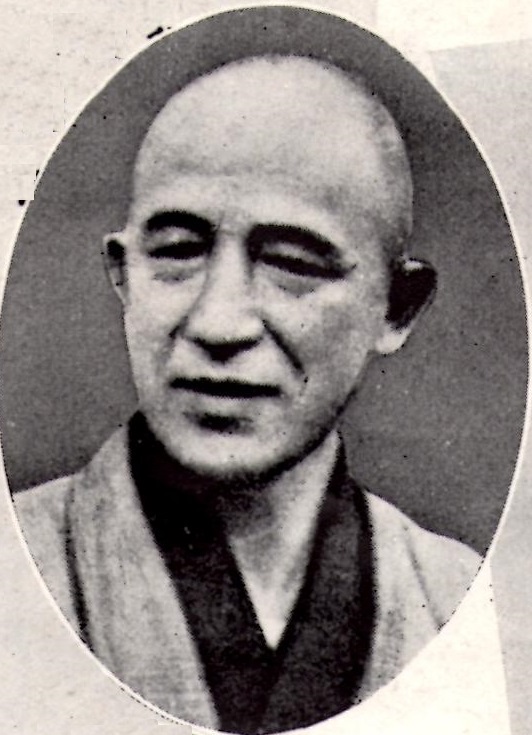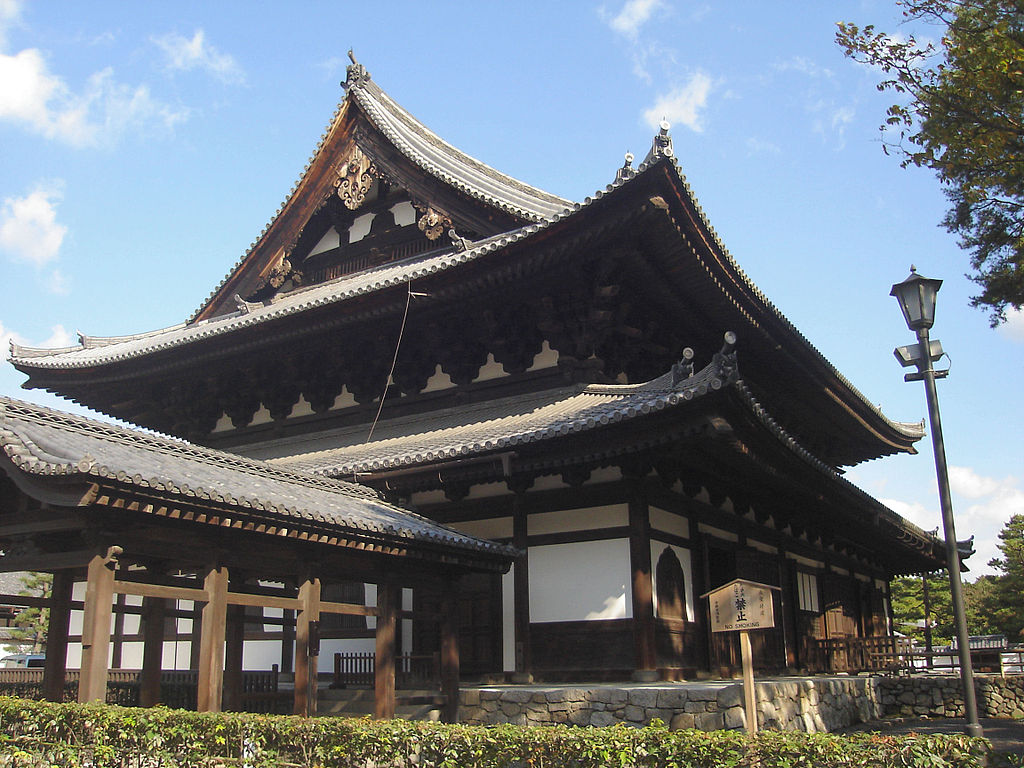
As a direct disciple of Nishida Kitaro (1870-1945), the founder of the Kyoto School of Philosophy, Nishitani Keiji (1900-1990) was involved from early on in the elaboration of a new “way of philosophizing,” as Jan Van Bragt, the translator of Religion and Nothingness, puts it. But, whereas Nishida had grown up in the early days of the Meiji Era, which had seen the introduction of Western philosophy, together with that of Western science and technology, in Japanese universities, Nishitani was born in a world where all things Western had come to be valued as superior to native Japanese culture, including Buddhism, which in fact had been officially banned by the Meiji government. So, when Nishitani fell into a deep state of despair following the loss of his father when he was fourteen, his own illness (he had caught tuberculosis, the disease that had killed his father), and his failure at the entrance examination of the prestigious Daiichi High School, he first turned to Western philosophy, specifically, Nietzsche and Dostoevsky, two thinkers he had found “to be well-attuned to the issue of nihilism” (John Krummel). James Heisig writes that, “upon graduation from high school, and having renounced his original plan to study law, Nishitani saw himself faced with three possible life paths: he could become a Zen monk, join a utopian community called “New Town,” or study philosophy. He chose the latter, and enrolled at the University of Kyoto, where he studied under Nishida and Tanabe.” It is in fact much later that Nishitani turned to Buddhism, as well as, more broadly, ancient East Asian worldviews. After completing his PhD dissertation on Schelling and Bergson in 1924, he developed an interest in mysticism, and it is only in 1936 that he took up a Rinzai Zen practice at Shokokuji Temple in Kyoto under Master Yamazaki. The sense of despair that had led him to philosophy had also led him eventually to “the awareness of the Mahayana doctrines surrounding the theme of “emptiness” (Krummel).
From then on, Heisig writes, “Zen became a permanent feature of his life … it was a matter, as he liked to say, … of ‘thinking and then sitting, sitting and then thinking’.”
Krummel writes that “although the writings of the Kyoto School founder, Nishida Kitaro (1870–1945), were replete with Buddhist inspired ideas, their Buddhist origins were not always made explicit until in his very last works.” Nishida had chosen to “philosophise” from the standpoint of no-mind, using “intuition,” rather than discursive thinking, to inquire into the nature of reality, but he did not want his insights to be associated “states of consciousness” accessible only to Buddhist practitioners. Nishitani, however, “never seemed to have any qualms about discussing certain elements in his thinking as Buddhist, in particular, Mahayana or Zen inspired. Yet the issue is not a simple one and it would be reductive to identify Nishitani as nothing but a Buddhist thinker … His major concern throughout his career was nihilism and modernity.”
Jan Van Bragt, likewise, emphasises that “Nishitani is fond of calling to mind any number of old Japanese and Chinese texts, wrestling with them until he has secured the blessing he seeks. This material belongs almost entirely to the Buddhist tradition,” noting that “the words of Dogen, the thirteenth century founder of the Soto Zen Sect in Japan, will be found to loom especially large here … At every turn Nishitani emphatically makes the Eastern insights his own while probing their relevance for contemporary life and their relationship to Western philosophical theories and religious tenets.”
Nishitani’s philosophical inquiry may be regarded as a development of Nishida’s last essay, “The Logic of the Place of Nothingness and the Religious Worldview” (presented in Nishida’s Last Writings) composed in 1945, where, at this late stage of his life, he did acknowledge his Buddhist sources). “But,” Krummel notes, “Nishitani refines them to the extent that one might say he had surpassed Nishida in the attempt to articulate the Prajnaparamita way of thinking in the language of contemporary philosophy.” One obvious theme Nishitani appropriated is “absolute nothingness” (Jp mu). Nishida had avoided the term sunyata, and replaced it by the Western philosophical concept of “nothingness,” simply adding the word “absolute” to distinguish it from “relative” nothingness. Nishitani eventually returned to the Buddhist term, insisting on using the Sanskrit word sunyata itself to avoid any misunderstanding. “What Nishitani calls the “field of sunyata (Jp ku no ba) corresponds loosely to Nishida’s “place of absolute nothing” (Jp zettai mu no basho) … Moreover … he uses the concept of mu to broadly encompass both its negative connotation in nihilism (i.e., what he more specifically calls “nihility,” kyomu) and its salvific connotation in Buddhism (for which he uses the Mahayana designation of emptiness)” (Krummel).
Nishitani appropriated such Buddhist concepts as karma, dharma, duhkha, interpenetration, samadhi, original countenance, the Great Doubt, the Threefold Truth, the Primal Vow, Dogen’s “dropping-off body-and-mind,” the Diamond Sutra’s logic of soku, etc. In fact, in “My Philosophical Starting Point,” [an autobiographical text] Nishitani writes that he has “come to understand things according to the Buddhist way of thinking.”
This is especially true in Religion and Nothingness, regarded as his masterpiece, published in Japan from 1961 onwards. In the Preface of the book, Nishitani explains the way he borrowed terms from Buddhism. He writes: “I have borrowed these terms only insofar as they illuminate reality and the essence and actuality of man. Removed from the frame of their traditional conceptual determinations, therefore, they have been used rather freely and on occasion … introduced to suggest correlations with concepts of contemporary philosophy.” Nishitani acknowledges that “this way of using terminology may seem somewhat careless, and, at times, ambiguous,” adding, however, that this cannot always be avoided since he is taking “a stand at one and the same time within and without the confines of tradition.”
Nishitani described his position as follows: “We Japanese have fallen heir to two completely different cultures … This is a great privilege that Westerners do not share in … but at the same time this puts a heavy responsibility on our shoulders: to lay the foundations of thought for a world in the making, for a new world united beyond differences of East and West.” He was undoubtedly regarding himself as a philosopher, using the terminology of a discipline that had been shaped by Western categories, based on Plato’s concept of “being,” but at the same time, he did not hesitate to use Buddhist concepts to articulate the very different understanding of reality shared by East Asians, based on emptiness, which was never a matter of just replacing one term (being) by another (emptiness). It, instead, implied a radical rethink of logic and a full reversal of one’s approach of reality, in all our interactions with other people as well as the natural world. And, in addition, he and other philosophers of the Kyoto School, were keen to be understood both in Japan, Asia in general, and the West. No one can deny that this was a tall order indeed.
Van Bragt defines the “basic characteristics of the Kyoto School as … a thoroughgoing loyalty to its own traditions, a committed openness to Western traditions, and a deliberate attempt to bring about a synthesis of East and West.
Krummel characterises Nishitani’s project as a “renewal of tradition via a creative “retrieval” (in the Heideggerian sense of the term) of its source, a deconstruction that is also a (re)construction … By “retrieval of its source,” Nishitani has in mind, first and foremost, the existential appropriation of the Mahayana standpoint of emptiness. So on the one hand his work explicates Mahayana concepts in light of contemporary philosophy while on the other hand it provides an existential grounding by showing their relevance to contemporary issues.”
Sources:
James W Heisig – Philosophers of Nothingness (2001)
Nishitani Keiji – Religion and Nothingness (Jp Shukyo to wa nani ka, literally What is Religion?) (1961 onwards in Japan, translated in 1982)
Nishitani Keiji – My Philosophical Starting Point
John W. M. Krummel – “Nishitani Keiji: Nihilism, Buddhism, Anontology,” in the Dao Companion to Japanese Buddhist Philosophy, Ed. Gereon Kopf
Nishitani Keiji – “The Days of my Youth,” in Heart in the Wind, quoted by Jan Van Bragt in his Translator’s Introduction to Religion and Nothingness

